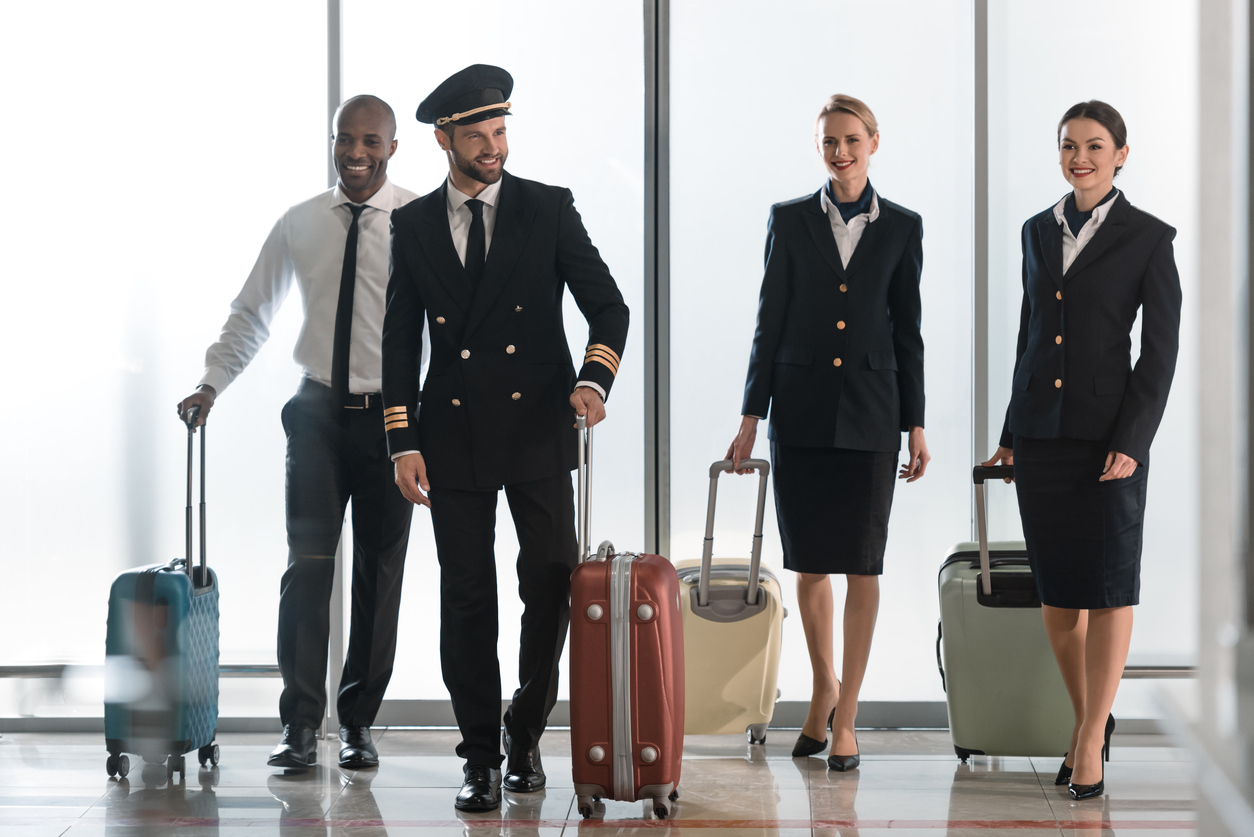Do flight crew members, including pilots and flight attendants, undergo security checks similar to passengers? The vetting process for aircraft crew involves identity and security screenings as part of their employment requirements. Additionally, they are subject to multiple security and identification verifications at airports. Let’s figure it out!
On April 7, 1994, FedEx DC-10 flight engineer Auburn Calloway, facing termination for falsifying flight hours, smuggled weapons aboard Flight 705, attacking the crew. Despite injuries and significant damage to the aircraft, the flight landed safely. This incident underscores the necessity for crew security checks.
Join us on TELEGRAM for the Latest Aviation Updates fresh to your phone.

In response, the United States implemented the Known Crew Member (KCM) program, allowing pilots and flight attendants to undergo thorough background checks. This enables them to bypass standard security via a designated entry by presenting identification, facilitating quicker access to secure areas.
However, strict regulations exist within this system. Crew members traveling in civilian clothes must adhere to the same liquid restrictions as regular passengers and cannot use their status to transport items for others through security.

The Association of Flight Attendants, through the Flight Attendant United Master Executive Council, says on KCM that it’s an expedited security process that verifies the identity and employment of crew members, highlighting its importance and the collective responsibility to adhere to its guidelines to preserve this privilege.
Known Crew Member (KCM) is a program allowing for expedited security screening and clearance to sterile areas for Crew Members. The structure of KCM enables TSA security officers to positively verify the identity and employment status of authorized crew members. It is a privilege we have all come to value. Attempted use of the program outside the established parameters puts all of us at risk of losing the privilege.”
Exceptions exist where crew members may be randomly selected for additional security checks alongside passengers.

The Transportation Security Administration (TSA) has reconsidered the continuation of specific expedited screening programs, opting instead to update regulations with added criteria for participation. This adjustment aims to counteract potential insider threats by tightening security measures.
Regardless of the method—be it a fast-track program or a separate security checkpoint—all crew members are subject to screening. Debate persists over various requirements, and given the dynamic nature of the industry, modifications to security protocols are anticipated in the future.
Featured image by LightFieldStudios | istock
Youssef Yahya is the CEO and Founder of Aviation for Aviators. He also serves as the Chief-in-Editor of the platform’s website, where he shares his passion for aviation and provides valuable resources for aviation enthusiasts and professionals alike. His love for aviation and entrepreneurial spirit drive him to create innovative solutions, making Aviation for Aviators a unique resource in the aviation sector.
You might also like:
- Air India Introduces Controversial Room-Sharing Policy for Cabin Crew
- Middle East Air Travel Impact Following Iran’s Retaliation on Israel
- Cathay Pacific Expands Cargo Fleet with Airbus A350F Purchase
- Interview with SWISS CEO Dieter Vranckx on Sustainability and New Routes
- Etihad Airways signs a partnership with Air Arabia to launch the first low-cost carrier in Abu Dhabi.
Discover more from Aviation for Aviators
Subscribe to get the latest posts sent to your email.

